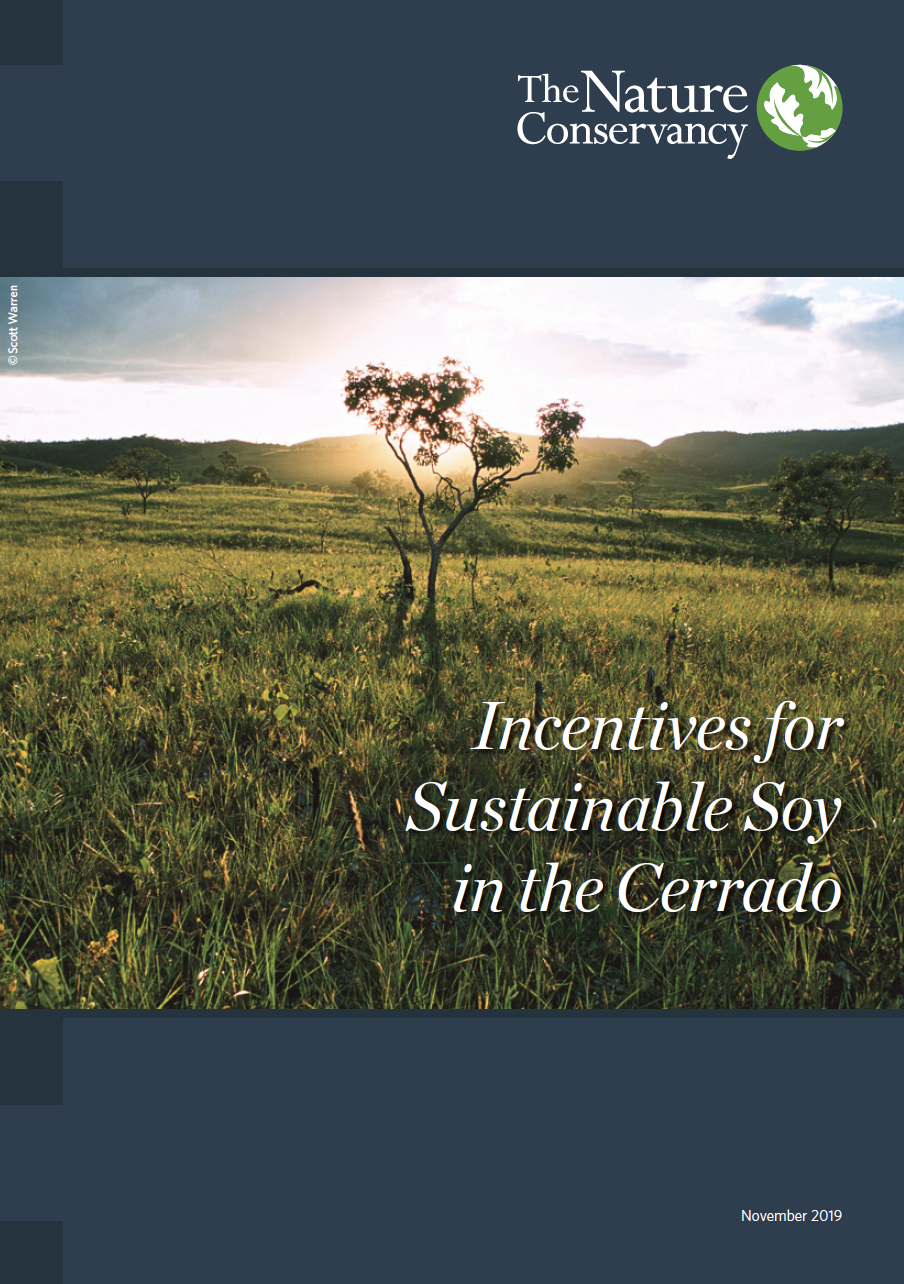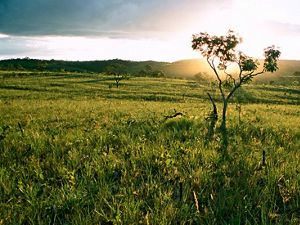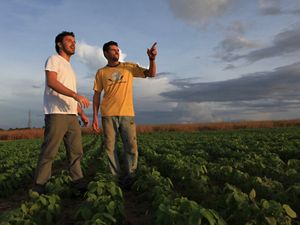A Business Case for Sustainable Soy
How changes in economic incentives could protect Brazil’s surviving Cerrado without harming its growing soy industry
Growing global demand for soy—and the resulting growth in the crop’s production footprint—is dramatically reshaping one of the most biodiverse habitats on Earth: the Cerrado, a vast savanna in Brazil. But increasing soy production doesn’t have to further encroach on the surviving parts of this ecosystem, according to new research by The Nature Conservancy (TNC).

The Cerrado has become the epicenter of soy expansion in Brazil, largely in response to increasing demand from China. Once a mosaic of forests, savanna and grasslands, fully half of the Cerrado’s native vegetation has been converted to cropland and pasture in recent decades. Over 70 percent of the soy production area in the Cerrado is managed by large producers with properties of 2,500 hectares or more.
The loss of natural habitats like the Cerrado is a significant contributor to climate change, making this issue one of global importance. And closer to home, there are devastating effects for farmers in the region. The conversion of natural landscapes is actually negatively impacting local soy productivity (potentially up to 10 percent reduction in yields over the next decade) due to higher temperatures and other weather anomalies.
But there are practical, economically-sound measures that can turn this trend around. TNC and partners analyzed land-use dynamics, economics and business models for farmers in order to identify new mechanisms that can allow for soy expansion without further land conversion. There are ways to expand that are good for the economy, good for farmers and good for the environment.
Download
Why is the Cerrado so important?
The Cerrado covers approximately 25 percent of Brazil's surface area and represents the most biodiverse savanna ecosystem on Earth. It’s rich in water and an important natural carbon sink, making its health critical for local communities—and the entire world. Located between the Amazon, Atlantic Forests and Pantanal, the Cerrado is the largest savanna region in South America. Lurking among the arid grasslands and shrubbery, large mammals such as the jaguar, maned wolf, giant anteater, giant armadillo and marsh deer make the Cerrado their home. There are also over 10,000 species of plants, almost half of which are found nowhere else in the world. In addition to these ecologically critical factors, the Cerrado is an economic powerhouse. Agribusiness makes up about 20 percent of Brazil’s GDP and when broken down by state most is from the Cerrado region.
Quote
The loss of natural habitats like the Cerrado is a significant contributor to climate change, making this issue one of global importance. And closer to home, there are devastating effects for farmers in the region.

So where should we grow soy without further damaging native land?
First, we need to recognize demand for soy continues to grow—current estimates project an additional 7.3 million hectares of soy expansion in the Cerrado over the next decade. But there is more than enough suitable pastureland—approximately 18.5 million hectares—that could be converted for soy production. When combined with the sustainable intensification of cattle ranching, repurposing the pastureland could potentially accommodate all of the future expected demand for soy from the Cerrado without any further conversion of natural habitat.
Why are farmers still currently expanding on "natural" uncleared land if there’s so much other land to use?
Farmers have historically expanded on already cleared pasture for about 70 percent of new planted areas, however they continue to clear native vegetation for nearly a third of their expansion. And, in some regions, the clearing of native vegetation makes up as much as 80 percent of their expansion. From a farmer’s perspective, it’s a logical consequence of market conditions: a combination of the cost of land, how its acquisition is financed, and the fact that land-use law (the Brazilian Forest Code) allows farmers to convert a large portion of the natural habitat they may already own, particularly in the Cerrado. It stands to reason then that farmers need to be incentivized to increasingly shift the remaining third of their expansion to existing underused pastureland.
How do we change those incentives?
Emerging financial mechanisms (detailed in the report), such as low-cost, long-term financing and low-cost crop finance, can help shift the economics of expansion in favor of deforestation and conversion free (DCF) business models for farmers. Incentivizing this approach will accommodate further growth in demand for soy while also safeguarding much of the surviving savanna from further conversion. This new study shows that reversing the conversion trend is possible—and we can achieve it now.


Why is soy of global importance?
Soy is one of the world’s most ubiquitous commodities. The vast majority (70-75 percent) of the world’s soy is used to feed livestock, but it also has myriad other uses, from human food products to industrial applications. It’s in mayonnaise and in the cleaning solvents many of us use in our home. It may even be in the hood of your vehicle or the tractors used in the soy fields. In other words, we are all contributing to the demand for soy. By being aware of its impacts and encouraging more sustainable practices from consumer to supplier, we can reduce the conversion pressure on critical landscapes like the Cerrado.
Humanity stands at a crossroads: how can we feed a growing global population with dwindling agricultural land, while also safeguarding nature and meeting the demands of a growing population? As this report shows, sometimes a relatively simple shift in the economic incentives can make sustainable choices more profitable choices: creating win-win-win situations for businesses, people and nature.
Resources
-

Incentives for Sustainable Soy in the Cerrado
PDF
This paper presents financial incentives and other measures that can support increased soy production without further conversion of native vegetation in the Cerrado.
DOWNLOAD
Global Insights
Check out our latest thinking and real-world solutions to some of the most complex challenges facing people and the planet today.



